






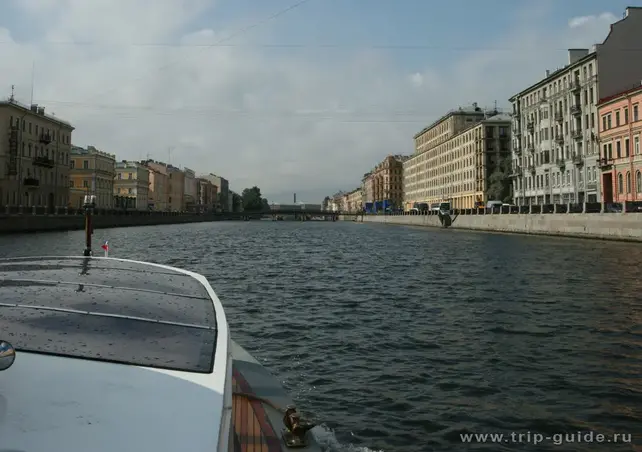
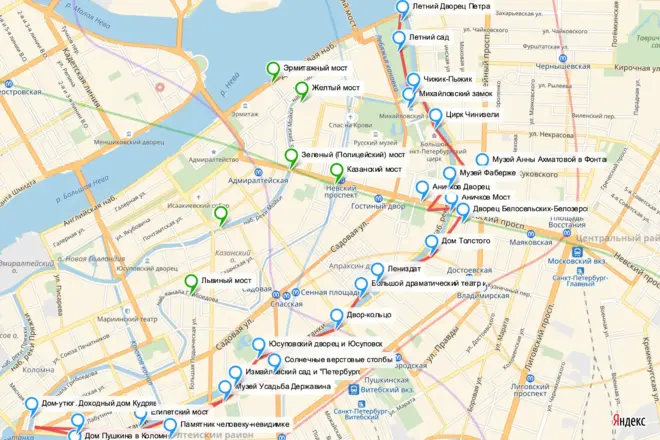
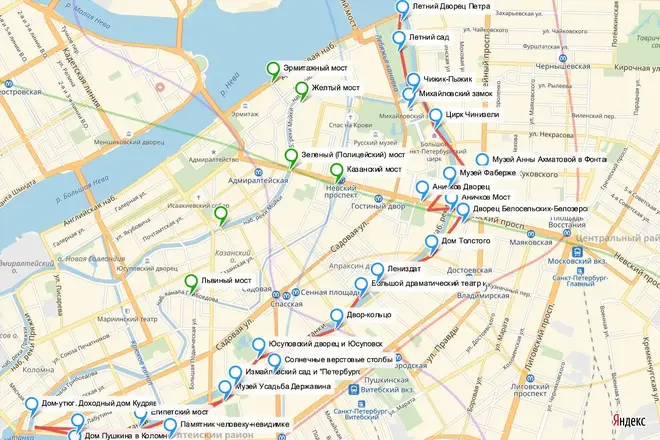
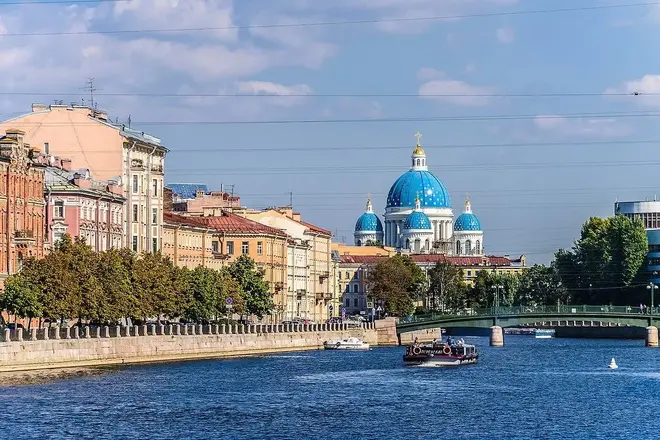


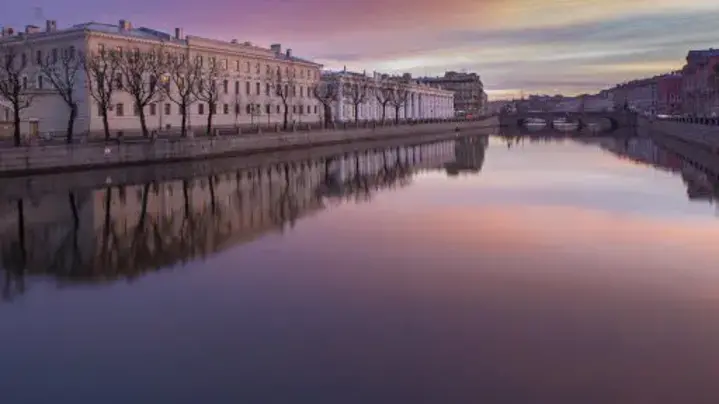
Folgen Sie dem Fluss: kostenlose Wanderung entlang des Flusses...
Tourbeschreibung
Im Gegensatz zur Newa und ihren vielen Flüssen und Kanälen hat der Fontaka einen einzigen Damm entlang seiner sieben Kilometer langen Strecke. Bis zur Mitte des 18. Jahrhunderts diente die Fontanka als südliche Grenze der Stadt und danach als Grenze des feinen Baus von St. Petersburg. Es überrascht nicht, dass es hier eine große Anzahl von Gebäuden gibt, die von historischem und kulturellem Wert sind. Darüber hinaus können Sie sie nicht nur auf der Promenade kennenlernen, sondern auch an Bord einer Bootstour. Der moderne Name des Flusses Fontanka (vom russischen Wort "Brunnen") wurde 1737 erfunden, als Aquädukte darüber gebaut wurden, um die Brunnen des Sommergartens mit Wasser zu versorgen. Im 18. Jahrhundert wuchsen an den südlichen Ufern der Fontanka Wälder, die Banditen schützten, die die aus St. Petersburg führenden Autobahnen angriffen. Aus diesem Grund gab es in dieser Zeit an der Kreuzung der Hauptstraßen mit der Fontanka Armee- und Polizeiposten. Zahlreiche halbkreisförmige und rechteckige Brückenköpfe sind heute als Erinnerung an die Pfosten erhalten. Erst in der zweiten Hälfte des 18. Jahrhunderts, als die Stadtgrenze in den heutigen Zagorodny-Prospekt überging, betrat die Fontanka offiziell die Stadtgrenzen. Das erste Gebäude am Ufer der Fontanka war der Sommerpalast von Peter dem Großen. Nach dem damals von Peter eingeführten Brauch mussten alle Gebäude entlang eines Flusses ihre eigenen Liegeplätze und Pfeiler haben. Von 1780 bis 1789 baute der Architekt Alexey Kvasov Granitböschungen, Rampen und Slipanlagen zum Fluss. Ende des 18. Jahrhunderts wurde der Flusskanal begradigt. In den Jahren 1797-1800 wurde das Mikhailovsky-Schloss am Ufer der Fontanka vom Architekten Vincenzo Brenna auf Befehl von Paul I. erbaut, um das an drei Seiten ein Wassergraben gegraben und mit dem Fluss verbunden wurde.
Was werden wir auf dieser Tour sehen?







